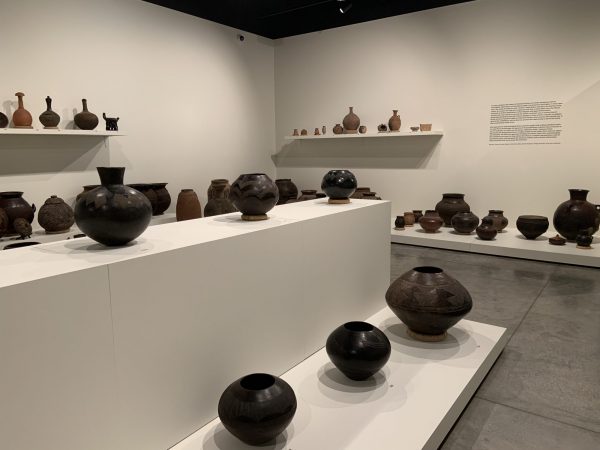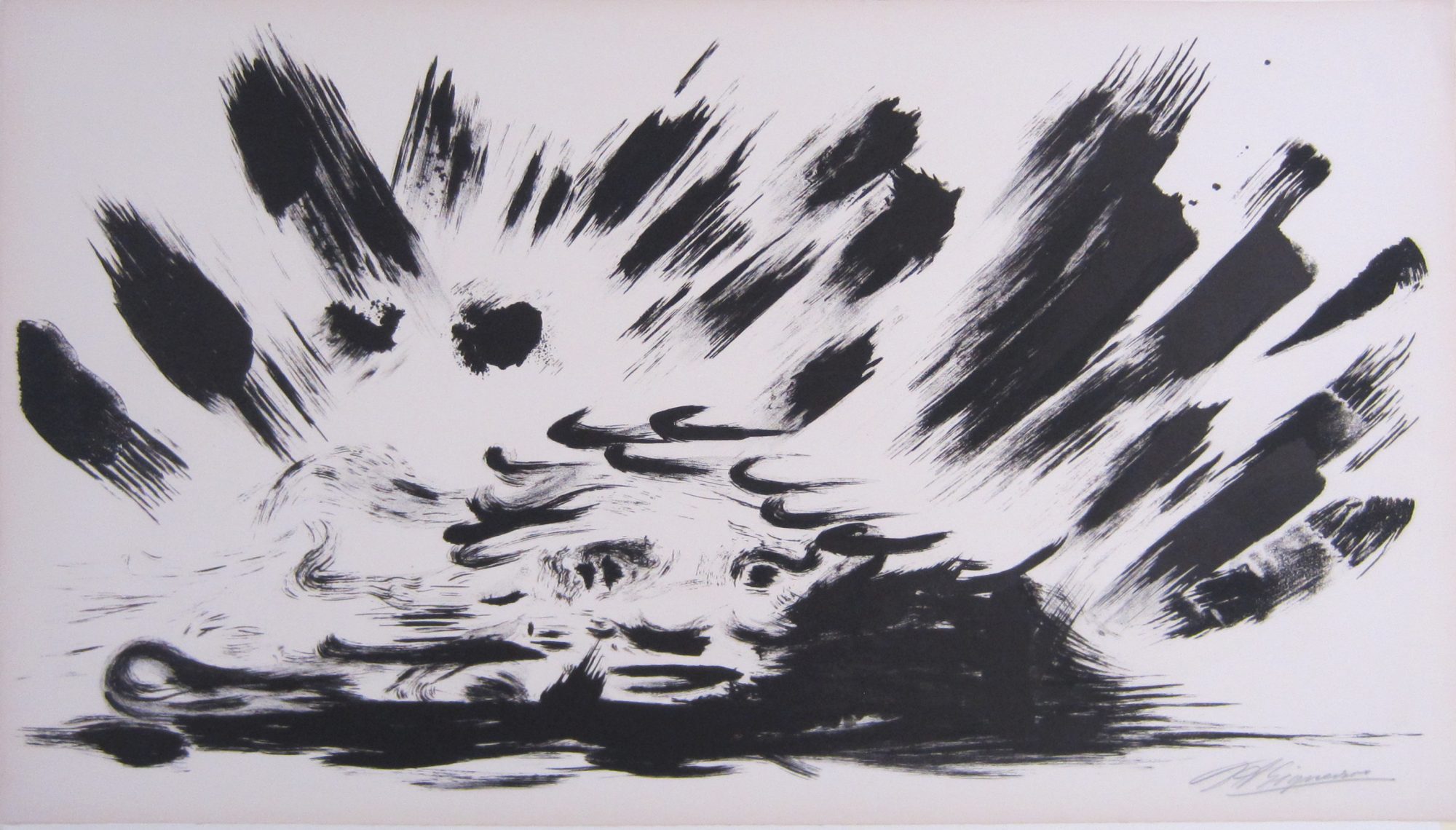
As cultural institutions and learning centers, art museums traverse boundaries by showcasing work from across time and around the globe. They are a meeting place for discussion, as director and chief curator of the Gregory Allicar Museum of Art (GAMA) Lynn Boland suggests, “... sitting at the center of the Venn diagram. Art museums exist where everything overlaps.”
GAMA is an educational museum with a public mandate to honor artmaking’s diversities. Here dynamic conversations converge between disciplines, genres, geographies, and cultures, inspiring visitors from all backgrounds to think critically about art. By prompting dialogue about what museums do, who they are for, and how they teach us, the Gregory Allicar’s exhibitions and programming illustrate how borders are never as clearly defined as they might seem.
Boland sees this intersection of viewpoints as foundational to GAMA’s purpose: “Art museums bridge divides, that’s what we do,” he says, a sentiment that’s reflected in the museum’s mission statement. The Gregory Allicar catalyzes visual literacy by sparking conversation between differing ideas.
Bridging divides means prompting interactions in the galleries between Colorado State University’s community and the wider region. “At GAMA, we connect disciplines across campus, and we connect the University with our community. Our geography reflects that bridge between ‘town and gown’—we’re part of the University Center for the Arts at the east edge of campus—but more so, I think it’s reflected in every exhibition, program, and event that we present,” says Boland.
A teaching museum
Working with classes from academic departments around the university is one way the Gregory Allicar fulfills its mission. Boland highlights the value GAMA brings to CSU as a teaching museum, stating, “Interdisciplinary collaboration is at the museum’s core. Great universities have art museums because they offer a hub for diverse ideas, allowing expansive dialogue that remains grounded in something very specific: the art object.”
In the recent exhibition Richard De Vore and the Teaching Collection (closed June 20, 2021), the art object reminded viewers how the museum intersects with CSU’s colleges. The show assembled works made or kept by Richard De Vore, a former professor of pottery in the Department of Art and Art History, and several artworks on display were part of De Vore’s “teaching collection”—objects kept in the CSU Pottery Studio for learning and making purposes.
Professors and students also navigate the boundaries between education and display through curation, like in the exhibition Shattering Perspectives: A Teaching Collection of African Ceramics (closed April 25, 2021), a student co-curated show that explored ceramic arts from across Africa through GAMA's permanent collection of pottery. Associate professor of art history David Riep led students enrolled in a Spring 2020 art history seminar in designing and authoring the exhibition, which resulted in discussion about the politics and poetics of display, the methods, functions, and symbolism of pottery, and the roles that ceramics play in museum settings.
Students also co-curated Survivance, the five-year, ongoing exhibition featuring historical and contemporary Native art, also from the permanent collection. Inspired by Anishinaabe scholar Gerald Vizenor’s term to described how Indigenous people have not only survived, but actively resisted the pressures of settler colonialism in North America, students (guided by associate professor of art history Emily Moore) join the dialogue around Indigenous histories and futures.

An encyclopedic institution
Beyond its function as a teaching tool for CSU faculty and students, the Gregory Allicar’s collection also helps visitors navigate boundaries between genres, geographies, and media. The institution strives to be encyclopedic as “...a museum in which the works of a broad expanse of cultures coexist,”1 according to scholar Donatien Grau. GAMA is a public collection held by the people of Colorado and consists of more than 5,000 objects from cultures around the world, spanning more than 2,000 years.
For Boland, this breadth gives visitors a representative look at the many faces of art, which ultimately inspires compassion. “I think one of the most powerful functions of art is creating empathy—understanding and caring about cultures other than one’s own,” says Boland. “The encyclopedic nature of the collection and its aspirations work toward that, hopefully complicating visitors’ worldviews in ways that are not only accessible, but exciting as well.”
Glorioserías: The Body in Late Twentienth Century Mexican Art
“Gloriosería is a made-up word that conflates an enthusiasm for sensation with a fascination for the vulgar and the horrific,” says exhibition curator Álvaro Ibarra (Utah State University). The expression conflates gloria (glory) and grosería (a vulgarity) to reflect how modern Mexican artists grapple with grotesque realism—a genre that brutalizes and exaggerates the body—as a subversive method for negotiating identity. The exhibition is on view through April 10, 2022.
Creating a diverse collection is an ongoing process that requires diligence, funding, and community generosity. Historically, the museum relied exclusively on gifts to grow the collection, and GAMA’s holdings have expanded through alumni donations—like a portfolio of Mexican prints from the Taller de Gráfica Popular by alumnus Marcelo Calle—and the establishment of acquisition funds.
One such endowment is the Dale Pruce and Leslie Walker Latin American Art Acquisition fund. Current exhibition Glorioserías: The Body in Late Twentienth Century Mexican Art features work acquired with this funding, such as Canto General Plate 9, a lithograph by celebrated Mexican artist David Alfaro Siqueiros.
Yet there is always room for growth: recognizing the underrepresentation of Black, Indigenous, and other artists of color in the collection, the museum recently began allocating funds for intentional purchases. Two investments in collection diversity are on display in New Acquisitions (open through March 11, 2022)—Zora J Murff’s digital prints Intersection and Terri (talking about the freeway) hang alongside work in myriad genres, including Southern American folk art, Oceanic art, painting, mixed media, and jewelry.

Where physical and virtual meet
When the Gregory Allicar’s doors closed during the COVID-19 pandemic, museum staff sought to keep the public connected with the collection. Linking the physical and virtual worlds, GAMA turned to the Berlin-based web application Kunstmatrix as a safe platform for viewing art from home.
The museum’s web exhibitions started with a Critic and Artist in Residency Series (C.A.R.S.) Online show curated by artist Binh Danh (closed December 19, 2021), which blended Danh’s own work with art from the collection. Corresponding exhibitions by Jess T. Dugan, Mauro Giaconi, and Courtney Egan followed, alongside Women’s Textiles Across Africa: The Symbolic and the Practical, the 2020 MFA Thesis Exhibition, and virtual versions of in-person shows like Clara Hatton: A Vision for Art at CSU.
Additionally, GAMA has made in-person events available online—curator talks, exhibition tours, behind-the-scenes footage, and yearly “MFA Speaks” presentations are a few examples of the programming made accessible through the museum’s website, YouTube, and Vimeo account.
Interdisciplinary collaboration
Interdisciplinary programs are ultimately what drive the museum forward. Reclamation: Recovering Our Relationship with Place (closed September 19, 2021), curated by associate professor of painting Erika Osborne, was a collaboration with CSU’s Energy Institute as part of the global project Extraction: Art on the Edge of the Abyss. The exhibition allied art with activism, chemistry, ecology, and soil science, highlighting the necessity for collaboration between the humanities and sciences on climate change solutions.
As Osborne noted in an interview about the exhibition, “...in order to truly find, and implement, solutions to the very large and complex problems our planet is facing, we need to act collectively—utilizing the specialized knowledge of all the disciplines.”


Ensuring accessibility
All exhibitions and programming (except for the yearly Visualize fundraiser) are free and open to all, which helps the museum ensure that everyone is welcome in the conversation. GAMA also provides push button openers on all doorways, large print type, assisted listening devices, and Spanish translations for wall texts. After the COVID-19 pandemic shut museum doors in 2020, the museum has since reopened during its range of times from 10 a.m. to 6 p.m. Wednesdays, Fridays, and Saturdays, from 10 a.m. to 7:30 p.m. on Thursdays, and on Sunday afternoons from 1 to 5 p.m. to further ensure easy access to the galleries. GAMA is closed Mondays and Tuesdays but reserves space for CSU class visits from across campus.
Making connections across borders is fundamental to the Gregory Allicar Museum of Art. As the center of the Venn diagram, disciplines, voices, and communities overlap in GAMA’s galleries, inspiring fresh perspectives and wonder for the students, faculty, and public who in turn bring both the collection and the museum space to life.
Coming Soon
In Spring 2022, Cannupa Hanska Luger, an artist from Reclamation: Recovering Our Relationship with Place, will visit for a special lecture and performance featuring drone footage of the Cache la Poudre River, dance, regalia from Luger’s Future Ancestral Technologies series, and music provided by composer Jake DiFebo, a CSU candidate for Master of Music, Music Education—Composition Specialist. The event is a collaboration with the School of Music, Theatre and Dance and CSU’s Energy Institute.
Navigating Borders
From water to dance, science to film, clay to gender, the liberal arts helps us navigate the borders in our lives that are physical, metaphorical, or cultural.
